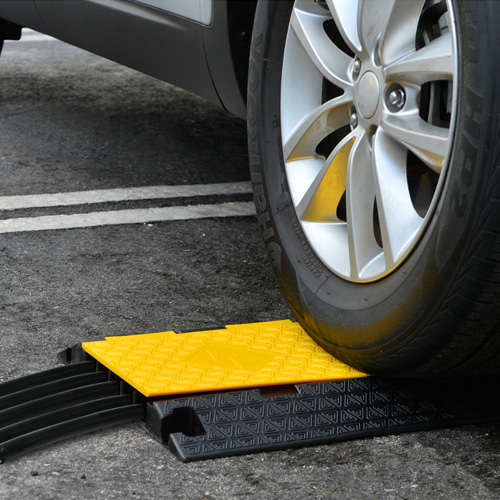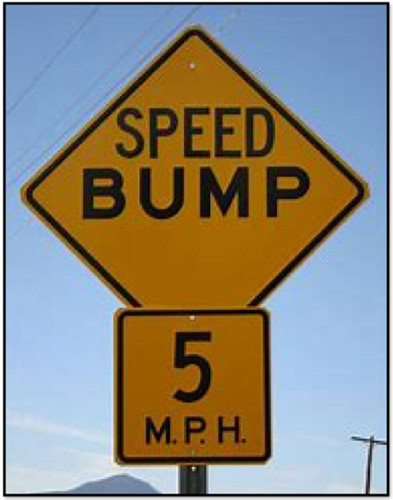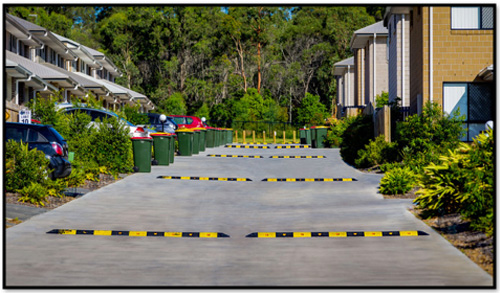Overview
Introduction to traffic management
Traffic management is a crucial aspect of ensuring the smooth flow of vehicles and maintaining road safety. It involves implementing various strategies and measures to regulate the movement of vehicles, control traffic congestion, and reduce the risk of accidents. One important element of traffic management is the use of speed bumps, which are designed to slow down vehicles and improve overall road safety. This article aims to explore different types of speed bumps and their effectiveness in managing traffic flow. By understanding the various options available, traffic managers can make informed decisions about which
type of speed bumps is most suitable for specific road conditions and traffic requirements.
Importance of speed bumps in traffic management
Speed bumps play a crucial role in traffic management by promoting safer driving habits and reducing vehicle speed. They are designed to slow down vehicles, especially in areas with high pedestrian activity or near schools and residential areas. By forcing drivers to slow down, speed bumps help prevent accidents and protect vulnerable road users, such as pedestrians and cyclists. Additionally, speed bumps can also help in reducing noise pollution and improving overall road safety. Overall, speed bumps are an essential tool in traffic management strategies to ensure the safety and well-being of both drivers and pedestrians.
Types of speed bumps
Speed bumps come in various forms and designs, each serving a specific purpose in traffic management. The most common type is the traditional speed hump, which is a raised portion of the road that slows down vehicles by forcing them to reduce their speed. Another type is the speed cushion, which consists of a series of raised platforms that allow larger vehicles, such as buses and emergency vehicles, to pass through without significantly reducing their speed. Speed tables are another variant, which are longer and flatter than speed humps and provide a more gradual change in speed. Finally, there are also rubber speed bumps, which are made of durable rubber material and are often used in temporary traffic control situations. Overall, the choice of speed bump type depends on the specific traffic management needs and the desired level of speed reduction.
Traditional Speed Bumps
Design and construction of traditional speed bumps
Traditional speed bumps are commonly used in traffic management to reduce vehicle speeds in certain areas. These speed bumps are typically made of asphalt or concrete and are designed to be raised surfaces on the road. The construction process involves creating a raised platform using the chosen material and ensuring it is securely anchored to the road surface. The height and width of traditional speed bumps may vary depending on the desired traffic calming effect. Additionally, markings or reflectors are often added to enhance visibility and alert drivers to the presence of the speed bumps. Overall, the design and construction of traditional speed bumps play a crucial role in effectively managing traffic and promoting road safety.
Advantages of traditional speed bumps
Traditional speed bumps have several advantages in traffic management. Firstly, they are effective in reducing vehicle speeds, ensuring the safety of pedestrians and other road users. Secondly, they are relatively easy and cost-effective to install, making them a popular choice for many municipalities. Additionally, traditional speed bumps are durable and require minimal maintenance, making them a long-lasting solution for traffic calming. Overall, the use of traditional speed bumps can significantly improve road safety and enhance traffic management efforts.
Disadvantages of traditional speed bumps
Traditional speed bumps have several disadvantages. Firstly, they can cause discomfort and inconvenience for drivers and passengers, especially when driving at higher speeds. The sudden jolt and impact of going over a speed bump can be unpleasant and may even result in damage to the vehicle. Additionally, traditional speed bumps can contribute to traffic congestion, as drivers are forced to slow down significantly when approaching them. This can lead to delays and frustration, especially during peak traffic hours. Furthermore, speed bumps can also pose a safety hazard for cyclists and motorcyclists, as the abrupt change in elevation can cause loss of control and accidents. Overall, while traditional speed bumps serve the purpose of slowing down vehicles, they come with various drawbacks that need to be considered in traffic management strategies.
Speed Humps
Characteristics of speed humps
Speed humps are a common traffic calming measure used to reduce vehicle speed in residential areas and other areas with high pedestrian activity. They are typically made of asphalt or concrete and are designed to be raised surfaces on the road. Speed humps are characterized by their rounded shape and are wider and longer than traditional speed bumps. They are installed at regular intervals along the road to create a series of vertical deflections, forcing drivers to slow down. The height and dimensions of speed humps are carefully designed to ensure that vehicles must slow down to navigate them safely, while still allowing emergency vehicles to pass over them without significant delay. Speed humps are an effective way to improve road safety and reduce the risk of accidents in areas where speed control is necessary.
Benefits of using speed humps
Speed humps offer several benefits in traffic management. Firstly, they help to reduce vehicle speed, promoting safer driving behavior and reducing the risk of accidents. Additionally, speed humps can improve pedestrian safety by slowing down vehicles near pedestrian crossings or residential areas. They also serve as effective traffic calming measures, discouraging excessive speeding and enhancing overall traffic flow. Furthermore, speed humps are cost-effective solutions compared to other traffic management options, making them a popular choice for many municipalities. Overall, the use of speed humps can contribute to creating safer and more efficient roadways.
Considerations for installing speed humps
When considering the installation of speed humps, several factors should be taken into account. Firstly, it is important to assess the traffic volume and speed in the area where the speed humps will be installed. This information will help determine the appropriate height and spacing of the speed humps to effectively reduce vehicle speeds. Additionally, the impact on emergency vehicles should be considered to ensure that they can navigate the speed humps without delay. Furthermore, the potential effects on nearby residents, such as increased noise or vibrations, should be evaluated to minimize any negative impacts. Lastly, proper signage and markings should be installed to alert drivers of the presence of speed humps and promote safe driving behavior. By considering these factors, the installation of speed humps can contribute to improved traffic management and enhanced safety on the roads.
Speed Cushions
Features of speed cushions
Speed cushions are designed to slow down vehicles without causing discomfort to emergency vehicles or larger vehicles. They are typically made of rubber or asphalt and are installed across the width of the road. The cushions are raised, creating a gentle hump that forces drivers to reduce their speed. They are usually spaced apart to allow emergency vehicles to pass through without any hindrance. Speed cushions are an effective traffic management tool as they help reduce speeding and improve safety on residential streets.
Advantages of speed cushions
Speed cushions offer several advantages in traffic management. Firstly, they are effective in reducing vehicle speed, as they force drivers to slow down when passing over them. This helps to improve road safety by reducing the risk of accidents and the severity of injuries. Additionally, speed cushions are designed to accommodate emergency vehicles, allowing them to pass over the cushions without significant delay. This ensures that emergency response times are not compromised. Furthermore, speed cushions are cost-effective compared to other traffic calming measures, making them a practical choice for many municipalities. Overall, the use of speed cushions as a traffic management tool has proven to be beneficial in terms of safety, emergency response, and cost-efficiency.
Suitable locations for speed cushions
Speed cushions are an effective traffic calming measure that can be strategically placed in various locations to control vehicle speeds. One suitable location for speed cushions is in residential areas, especially near schools or parks, where pedestrian safety is a top priority. Another suitable location is on streets with a history of speeding or high traffic volume, as speed cushions can help reduce the risk of accidents and improve overall road safety. Additionally, speed cushions can be installed on roads with frequent intersections or curves, where drivers may be more prone to speeding. By strategically placing speed cushions in these locations, traffic management authorities can effectively control speed and promote safer driving habits.
Speed Tables
Design and purpose of speed tables
Speed tables, also known as raised crosswalks or raised platforms, are traffic calming devices designed to reduce vehicle speeds in specific areas. They are typically constructed by raising a section of the roadway to the level of the sidewalk or pedestrian crossing, creating a flat surface for vehicles to traverse. The purpose of speed tables is to encourage drivers to slow down and be more cautious, improving safety for pedestrians and other road users. By creating a physical barrier between the roadway and the pedestrian crossing, speed tables help to increase visibility and provide a clear indication to drivers that they are entering a pedestrian zone. Additionally, speed tables can also serve as a visual reminder to drivers to be aware of their surroundings and adhere to the speed limit. Overall, the design and purpose of speed tables make them an effective tool in traffic management, promoting safer and more pedestrian-friendly roadways.
Benefits of using speed tables
Speed tables offer several benefits in traffic management. Firstly, they help to reduce vehicle speeds, making the roads safer for pedestrians and other road users. By forcing drivers to slow down, speed tables can help prevent accidents and minimize the severity of collisions. Additionally, speed tables can improve traffic flow by encouraging a more consistent speed among vehicles, reducing the need for sudden braking or acceleration. This can result in smoother traffic movement and reduced congestion. Lastly, speed tables are cost-effective compared to other traffic calming measures, such as speed bumps or roundabouts. They can be easily installed and maintained, making them a practical solution for improving road safety and traffic management.
Installation considerations for speed tables
When installing speed tables, there are several important considerations to keep in mind. Firstly, the location of the speed table should be carefully chosen to ensure maximum effectiveness. It should be placed in areas where speeding is a common problem and where there is a need to slow down traffic. Additionally, the dimensions and design of the speed table should adhere to the local regulations and guidelines. This includes the height, length, and width of the table, as well as any required markings or signage. Installation should be carried out by trained professionals to ensure proper alignment and stability. Finally, regular maintenance and inspection of the speed tables should be conducted to address any issues and ensure their continued effectiveness in managing traffic speed.
Conclusion
Choosing the right type of speed bump
When it comes to traffic management, choosing the right type of speed bump is crucial. There are various factors to consider, such as the speed limit of the area, the volume of traffic, and the desired level of traffic calming. Speed bumps come in different shapes and sizes, including flat top, hump-shaped, and sinusoidal. Each type has its own advantages and disadvantages. For example, flat top speed bumps are effective at reducing speed, but they can be uncomfortable for drivers and may cause damage to vehicles if not installed correctly. On the other hand, hump-shaped speed bumps provide a smoother ride but may not be as effective at slowing down vehicles. Ultimately, the choice of speed bump should be based on a careful assessment of the specific traffic conditions and the desired outcomes of traffic management.
Importance of proper installation and maintenance
Proper installation and maintenance of speed bumps play a crucial role in ensuring effective traffic management. When speed bumps are installed correctly, they can effectively slow down vehicles and improve safety on the roads. Additionally, regular maintenance of speed bumps is essential to ensure their functionality and durability. Neglecting proper installation and maintenance can lead to various issues such as uneven surfaces, loose or damaged speed bumps, and reduced effectiveness in controlling vehicle speed. Therefore, it is important for authorities to prioritize the proper installation and ongoing maintenance of speed bumps to ensure the safety and efficiency of traffic flow.
Future developments in traffic management
As technology continues to advance, future developments in traffic management are expected to bring significant improvements to road safety and efficiency. One area of focus is the development of smart traffic management systems, which utilize real-time data and artificial intelligence to optimize traffic flow and reduce congestion. Additionally, the integration of connected vehicles and infrastructure will enable more efficient communication between vehicles and traffic management systems, allowing for better coordination and smoother traffic operations. Furthermore, the use of advanced sensors and automation technologies will enhance the accuracy and effectiveness of traffic monitoring and control. Overall, these future developments hold great promise in transforming the way traffic is managed, leading to safer and more efficient transportation systems.





